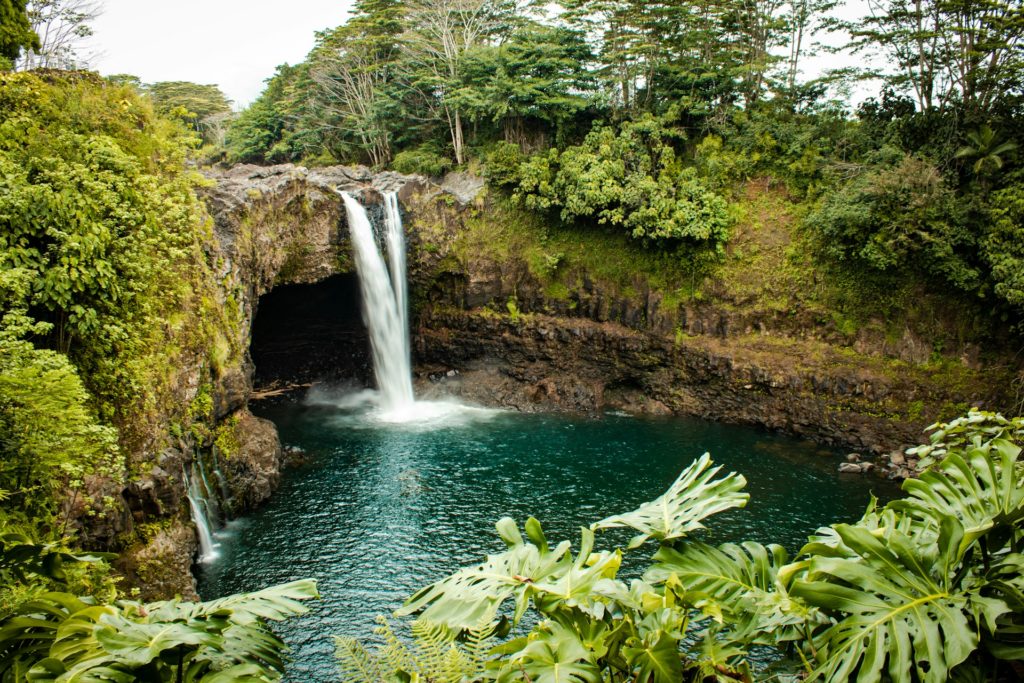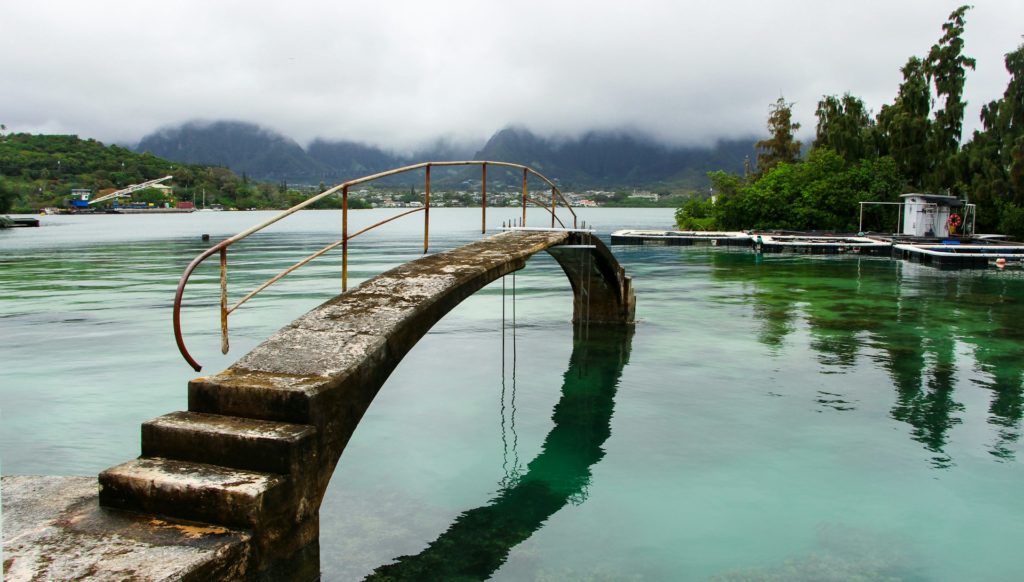Nestled on the east side of the Island of Hawaiʻi, Hilo beckons as the largest city in the County of Hawaiʻi. This tropical haven is not just another dot on the map but a vibrant hub that embodies the spirit of the Hawaiian archipelago. With the University of Hawaiʻi at Hilo enriching its cultural landscape, and the shield volcanoes standing guard in the distance, Hilo’s charm is as dynamic as the lava flowing from its nearby craters.
Imagine a place where botanical gardens flourish beside galleries and museums, and the scale of the island dwarfs the entirety of Rhode Island – Hilo is this enchanting paradox. A drive in a rental car along Saddle Road reveals vistas so vast, that they encompass more land than all the Hawaiian Islands combined. But what lies beyond the city limits? The answer lies in the heart of Hawaii’s Big Island, a secret ready to be unveiled.
Which Island Houses Hilo?
Hilo graces the shores of the Island of Hawaiʻi, also known as the Big Island, ensuring its title as the largest city within the state of Hawaii. Its coastal position is enhanced by the presence of Coconut Island, a small islet accessible by footbridge, offering a peaceful retreat from the bustle of city life. The galleries and museums of Hilo, such as the Lyman Museum and Mission House, chronicle the rich tapestry of local history and natural science, providing a window into the island’s soul.
As a family-oriented traveler, one can appreciate the educational value and engaging experiences these cultural centers provide. Whether it’s a day spent marveling at the historical relics or a picnic under the swaying palms of Coconut Island, Hilo extends an invitation to explore its depths. But the allure doesn’t stop there; the city’s geographical wonders are just around the corner, waiting to captivate the curious minds of both young and old.

Navigating Hilo: Transportation Options
With an array of transportation options, navigating Hilo is a breeze for visitors. Whether exploring by rental car, utilizing efficient bus routes, or enjoying the scenic pathways on foot, the city’s infrastructure accommodates travelers of all kinds, ensuring a seamless experience as they discover Hilo’s many wonders.
Arrival by Air: Hilo’s Aerial Gateways
For those arriving by air, Hilo’s aerial gateways welcome visitors from around the world. The city is served by a regional airport that connects the Island of Hawaiʻi to the rest of the state and beyond, providing a convenient entry point for families embarking on their Hawaiian adventure.
On the Ground: Bus Routes and Transport Services
Once on the ground, Hilo’s bus routes and transport services offer an eco-friendly way to navigate the city. Affordable and reliable, these services connect visitors to key attractions, making it easy for families to plan their daily excursions without the need for a rental car.
Maritime Connections to Hilo
The Hilo Farmers Market is just one of the many attractions easily accessible by the city’s maritime connections. Boasting a deepwater port, Hilo welcomes travelers arriving by sea, linking the Big Island to other parts of the Hawaiian archipelago and offering a unique perspective of the city from the water.
Hilo’s Must-See Attractions
Hilo is a treasure trove of natural beauty and cultural significance, home to must-see attractions like Rainbow Falls, the serene Japanese Garden, and the sprawling Hawaiʻi Volcanoes National Park. For beach lovers, the white sands of Hapuna Beach beckon, while ʻAkaka Falls State Park offers a mesmerizing display of cascading water.
Natural Wonders and Scenic Spots
From the misty majesty of Rainbow Falls to the tranquil beauty of the Japanese Garden, Hilo’s natural wonders are a visual feast. Hapuna Beach’s pristine shores invite sunbathers and swimmers alike, while the dramatic landscapes of Hawaiʻi Volcanoes National Park and the towering ʻAkaka Falls in its namesake state park inspire awe and adventure for all ages.
Hilo’s Historical Landmarks
Steeped in history, Hilo’s landmarks tell the tales of the island’s past. From sacred sites to historical buildings, each corner of the city offers a glimpse into the rich cultural heritage that has shaped the community and its people over generations.
Hilo in the Media
The picturesque city of Hilo has captured the imagination of filmmakers and storytellers, making appearances in various media as a backdrop for tales of romance, adventure, and the unique spirit of Hawaii.
Hilo’s Representation in Film and Television
Hilo’s lush landscapes and cultural landmarks have graced the screen in film and television, showcasing the city’s beauty and adding to its allure as a destination. These portrayals bring the magic of Hilo into homes worldwide, sparking wanderlust and a desire to experience its charms firsthand.
Local Media Outlets and Publications
On the Island of Hawaii, Hilo’s voice resonates through various local media outlets and publications. Newspapers like the Hawaii Tribune-Herald offer daily insights, while magazines such as Ke Ola celebrate the arts, culture, and sustainability of island life. These platforms not only keep the community informed but also serve as a bridge connecting Hilo’s stories to the wider world.

Hilo’s Connections Across the Globe
Hilo’s charm extends far beyond the shores of the Island of Hawaii. Its rich culture and unique landscape have created a network of connections worldwide, fostering cultural exchanges and enhancing its global presence. Through these links, Hilo shares the spirit of aloha, inviting international curiosity and collaboration.
Sister Cities and International Partnerships
The city of Hilo boasts sister city relationships that span the globe, from Japan to Portugal. These partnerships foster a sense of global unity, encouraging cultural exchanges and mutual growth. Through these bonds, Hilo and its international counterparts exchange ideas, traditions, and a commitment to community enrichment.
Hilo’s Role in Global Collaboration
Hilo’s initiatives in global collaboration reach into realms of education, science, and culture. It actively participates in discussions about climate resilience and sustainability, leveraging its unique experiences as a leader from the Island of Hawaii. This collaborative role not only highlights Hilo’s contributions but also underscores the interconnectedness of our world.
The Legacy and Future of Hilo District
The Hilo district, with its lush landscapes and beach parks, carries a legacy of resilience and community. Looking forward, Hilo envisions a future where its natural beauty and cultural heritage continue to thrive, balanced harmoniously with responsible development and the spirit of aloha that defines its past and shapes its future.
North Hilo District: Past and Present
North Hilo’s past is steeped in sugar plantations and ancient Hawaiian traditions, while today it stands as a testament to the island’s history. Its natural wonders, from the rainforest climate to the windward coast, continue to draw visitors and locals alike, preserving the district’s legacy and ensuring its vibrant future.
South Hilo District: Growth and Prospects
The South Hilo District, with its bustling city of Hilo as the county seat, embraces growth while honoring its roots. From the banyan trees lining the streets to the Haili Church dating back to the 19th century, South Hilo is poised for a future that respects its past, including its unique position as one of the wettest locations in the world, and anticipates a thriving tomorrow.
Conclusion: Hilo’s Place in the Heart of Hawaii
Enveloped by the lush rainforests and the dramatic coast of the island, Hilo captures the essence of Hawaii’s diverse beauty. From the booming sounds of the Boiling Pots to the stars unveiled at the ʻImiloa Astronomy Center, Hilo is where the island’s cultural heartbeat syncs with the natural splendor. Celebrations like the Merrie Monarch Festival illuminate the vibrant Native Hawaiian culture, drawing annual visitors worldwide to this Pacific Islander gem. Whether strolling through art galleries or sampling delicacies like macadamia nuts from the Mauna Loa Macadamia Nut Corporation, Hilo offers a unique blend of experiences that are deeply rooted in the island’s rich volcanic soil.
Yet, Hilo is not without its challenges, as history reminds us of the Pacific Tsunami Museum, which commemorates those lost to tsunamis, including the tragic event killing 159. According to the 2020 Census, the resilience of this community shines through, as it continues to grow and adapt. The Hele-On Bus and Hilo Harbor connect people, while vacation rentals invite guests to linger in this tropical rainforest haven. The Lyman House Memorial Museum and the Hawaii Volcanoes National Park stand as testaments to Hilo’s enduring legacy, a town vulnerable to tsunamis yet unyielding in its spirit, firmly anchored on the western coast of the heart of Hawaii.
